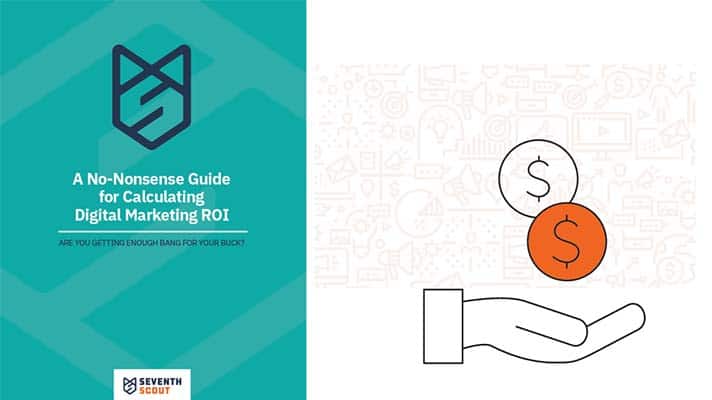An executive from my former life once said, “When I think of a blog, I think of this large mass of…” I instantly tuned him out. I couldn’t believe that was his response to my team’s suggestion of creating a blog for the company. He then proceeded to say there is no value in blogging and turned the idea down. In my mind, a simple “no” at the beginning would have worked just fine.
Years later, that response still tops the list of unexpected reactions to starting a blog. Typically, I hear, “It takes too much time.” “It doesn’t produce results.” “We’re doing plenty.”Like my former superior, many businesses don’t see the value. There are a lot of assumptions and misconceptions out there, and being a naysayer will only hurt your business in the long run. It’s time to debunk the blogging misconceptions out there and recognize that blogging has numerous benefits, and most importantly, offers an opportunity to build and advance a digital brand.
Blogging Misconceptions Hurting Your Business
Blogging has specific rules.
You’ll see a lot of best practices, tips, and recommendations on blogging, but there are no set formulas or rules. You need to blog for your audience and consider what’s going to work for your business. If blogging 4x a week isn’t manageable given your resources, then don’t do it. It’s better to have quality over quantity in the blogging realm. Same goes for blog length; there’s no right formula. We’ve read that 400-500 words is a best practice; however, many times we’ve seen amazing posts that are 800-1000 words. As my English professor used to say, content should be like a skirt, long enough to cover everything, but short enough to keep it interesting.
It requires a lot of time and resources.
Time is a relative term. Should you have a schedule? Yes. Should you have dedicated writers? Yes. What helps the process is creating a blog post calendar that has topics laid out with set publish dates and contributor names. This takes the burden off you being the sole blogger, especially if you have other responsibilities. Moreover, blogging is pretty transparent online. Meaning, your readers can easily tell when you’re not passionate about what you’re writing about. If you’re not excited, why should your readers be?
Don’t have a team? Don’t put all the responsibility on yourself. Enlist volunteers or look at third-party sources like Fiverr for help with blogging.
There’s not enough to blog about.
Back to that calendar. It helps to include topics that resonate with your audience. Feel free to ask your team for their input on topics. And if you don’t have a team, ask your followers on social media what topics they want to learn about. Still stuck? Sprout Content has a great article on how to find inspiration for blog content development. Additionally, if you really want to ace blogging, Mark Schaefer wrote an excellent book, Born to Blog that maps out everything you need to know about blogging and how to get it right.
Customers don’t read blogs.
If you’re new to blogging, you can’t assume your first few posts will go viral out of the gate. You also can’t assume that once you publish a blog that everyone will know it exists. You need to promote it via email, social media, or paid advertising to get more eyes on it, more traffic to your site, and more readership. Chances are readers may not visit your website expecting a new blog (especially if you don’t have a set schedule), but you can most likely expect they’ll come visit your blog from those other channels.
Blogs have a short shelf life.
If your blog is sorted by “recent” posts, then yes, we agree, a blog post has a short life, visually speaking. If you display five posts on a page, and you post twice a week, that first post will go from the top spot to the last spot to disappearing from the page fairly quickly. However, this doesn’t mean it gets sucked into a vortex and we forget it ever existed. Blog posts drive long-term results. Once, your post is published, it continues to get traffic and leads for days, weeks, months, and years to come, especially if you have evergreen content. A common misconception is that if you don’t see clicks or traffic within 24 hours of publishing a post, chances are that post that didn’t do well. Not the case.
Hubspot has an excellent graph (below) that shows how blogs drive long-term results.
Businesses don’t benefit from blogging.
It increases traffic. Hubspot statistics show that companies that published 16+ blog posts per month got almost 3.5X more traffic than companies that published 0-4 monthly posts. Why? A blog is the heart of all of your content marketing efforts. You’re essentially giving your website a central place for displaying valuable information for your customers. And it’s not just posting a blog and forgetting about it. You’re providing fodder for your social media channels. Any presence you have in social media not only gets your content exposed, but also attracts your followers and connections back to your page.
It improves SEO. Your blog operates like the rest of your website pages. Any time you publish a post, that’s one more indexed page, which gives your blog a higher chance of getting picked up by search engines, which helps improve your ranking in search results and increases your organic search stats. Improve SEO and improve traffic.
Blogging doesn’t yield results.
You can track readers, click-throughs, popular topics, shares, and comments on your blog, just like you can on other pages. Also, a blog helps drive conversions. End each blog post with a clear call to action and that gives readers an opportunity to make a decision that ultimately benefits your business. Encourage your audience to read more on a certain topic, follow you on social media, register for an event, make a purchase, etc. Want to know where conversions are coming from? Work with your web developer to create a URL parameter. This way you can drop specific URLs into your call to action and then track them in google analytics.
Companies that published 16+ blog posts per month got about 4.5X more leads than companies that published 0-4 monthly posts.– Hubspot Marketing Statistics
Go from blah to blog
If your marketing strategy focuses on brand awareness, lead generation, or thought leadership, then a blog should be a priority tactic. Today’s customers are thirsty for information, and they want to trust a business before making a buying decision. What helps influence these decisions? Valuable information from a business lets customers know you are truly helping solve a pain point versus directly selling them a product or service.
With all this said, it’s time to get started blogging. But before you open up any type of Word document, I suggest creating a list of topics that would resonate with your audience. These should not be a list of your products and services. Helicopter up and think about the problems you are trying to solve. If you’re selling organic cleaning products, you could blog about spring cleaning, decluttering, or common toxins in ordinary cleaners. Next, create a calendar with a schedule that is manageable for you and your team. Then, get to writing, publishing, and sharing.
And don’t forget; have fun! Blogging shouldn’t be painful. Remember, if you’re having a tough time writing, then chances are your audience will have a tough time reading.
Need some help creating a content strategy that includes blogging? Contact us to review your existing content efforts and together we can work to create a strategy that works for your business.





